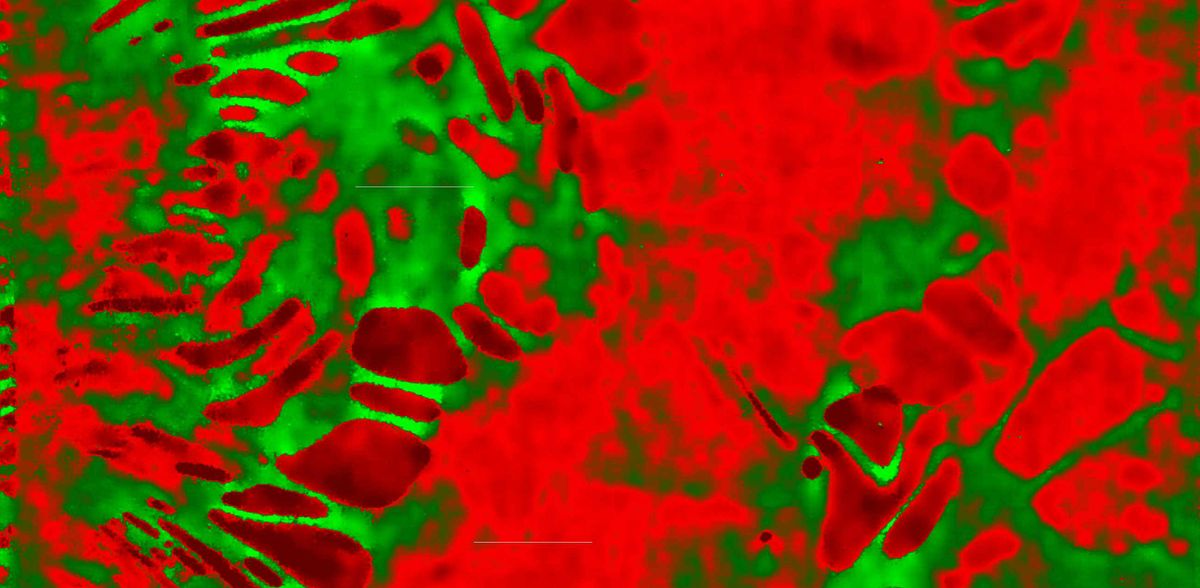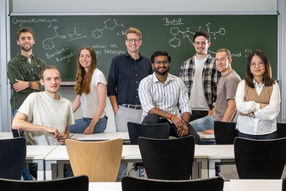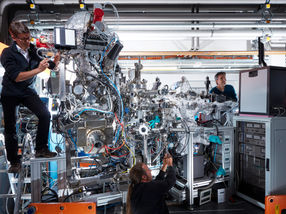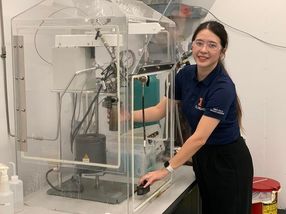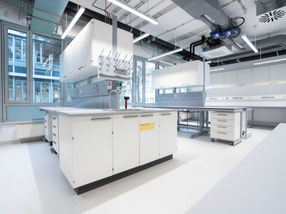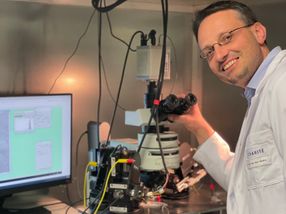Lithium-sulphur batteries with little electrolyte: problem areas identified
Advertisement
Using a non-destructive method, a team at HZB has for the first time investigated lithium-sulphur batteries in a practical pouch cell format that make do with particularly little electrolyte liquid. Using operando neutron tomography, they were able to visualize in real time how the liquid electrolyte is distributed over several layers and wets the electrodes during charging and discharging. These findings provide valuable insights into the mechanisms that can lead to battery failure and are helpful for the development of compact Li-S batteries with high energy density.
Lithium-sulphur batteries (Li-S batteries) are considered one of the most interesting next-generation battery technologies. Li-S batteries can achieve extremely high gravimetric energy densities (e.g. over 700 Wh/kg compared to around 250 Wh/kg for the most advanced Li-ion batteries currently available), making them particularly attractive for applications in aerospace, robotics and long-range electric vehicles. In addition, the abundant availability of sulphur offers a compelling alternative to critical and geopolitically sensitive metals such as cobalt and nickel, which are used in lithium-ion batteries.
However, the practical energy density is limited by the high weight content of inactive materials such as the electrolyte. In order to increase the energy density of lithium-sulphur batteries at cell level, it is therefore necessary to reduce the amount of electrolyte. However, the less electrolyte there is in the battery cell, the more difficult it is to fully wet the electrodes. However, incomplete wetting disrupts the electrochemical processes and leads to faster ageing or even failure of the battery. "It is crucial how the electrolyte wets the electrodes, penetrates their pores and is distributed in the Li-S cells. However, due to the closed design of the batteries, it is extremely difficult to observe this non-destructively," says HZB chemist Prof. Dr. Yan Lu, who led the study.
In order to observe the dynamic wetting of the batteries during charging and discharging in Li-S battery systems, Yan Lu's team used a non-destructive method, neutron tomography. To this end, the team first produced multi-layer Li-S pouch cells with reduced electrolyte in compliance with industry-relevant parameters. Dr. Ingo Manke and Dr. Nikolay Kardjilov from the HZB imaging group examined these samples with neutrons at the Institut Laue-Langevin in Grenoble in order to localize light elements such as lithium and hydrogen with the highest accuracy.
"For the first time, we were able to observe in real time how the liquid electrolyte behaves and how the wetting in the different layers of a pouch cell changes locally over time. We have gained some interesting insights from this," says Yan Lu.
During the resting phase of the battery at open-circuit voltage, unwetted areas accumulated in localized areas, especially at the beginning. The resting phase initially improves the wetting, but a long resting phase has only a minimal influence on the overall wetting.
The discharge/charge processes significantly improve the homogeneity of the electrolyte and thus promote the electrochemical activation of sulphur, so that the capacity of the batteries increases. For the first time, the team observed periodic processes in electrolyte wetting that correlate with the dissolution and precipitation of sulphur compounds. "The dynamic wetting behavior of the electrolyte is significantly different from that of conventional Li-ion batteries due to the special chemistry of Li-S systems," says Dr. Liqiang Lu, postdoctoral researcher in Yan Lu's team and first author of the publication.
"This is an important contribution to understanding the mechanisms that lead to rapid aging and failure of such systems. These findings will help to increase the energy density of Li-S batteries while preserving their lifetime," says Yan Lu.
Note: This article has been translated using a computer system without human intervention. LUMITOS offers these automatic translations to present a wider range of current news. Since this article has been translated with automatic translation, it is possible that it contains errors in vocabulary, syntax or grammar. The original article in German can be found here.
Original publication
Liqiang Lu, Nikolay Kardjilov, Xiangqi Meng, Kang Dong, Yaolin Xu, Qingping Wu, Alessandro Tengattini, Lukas Helfen, Jin Yang, Yan Guo, Moritz Exner, Ingo Manke, Yan Lu; "Visualising the dynamic wetting and redistribution of electrolyte in lean-electrolyte lithium-sulphur pouch cells via operando neutron imaging"; Advanced Energy Materials (2025).
Other news from the department science
Most read news
More news from our other portals
See the theme worlds for related content
Topic World Battery Technology
The topic world Battery Technology combines relevant knowledge in a unique way. Here you will find everything about suppliers and their products, webinars, white papers, catalogs and brochures.

Topic World Battery Technology
The topic world Battery Technology combines relevant knowledge in a unique way. Here you will find everything about suppliers and their products, webinars, white papers, catalogs and brochures.
